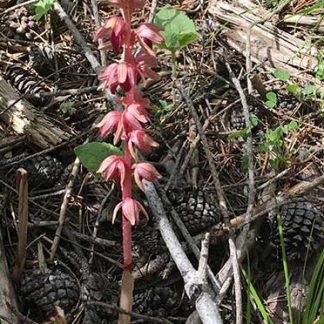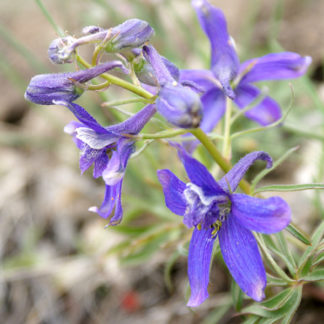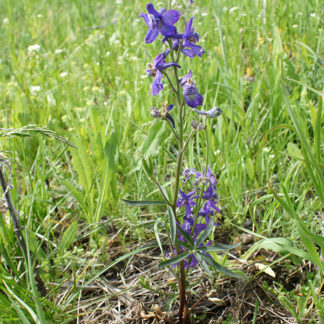Plants in the Valley
Showing 85–96 of 343 results
-

Corallorhiza maculata / spotted coralroot
- short, brown/red leafless flowering stalk, often in clumps
- intricate all brown/red-ish flowers except for a white lower lip, with reddish spots
- in conifer or aspen forest understory
-

Corallorhiza striata / striped coralroot
- short and purple - no green bits
- forest understory
- up to 35 flowers per stalk; often many stalks together
- flowers have 5 pointy, purple striped "petals" and one darker lower lip petal
-

Corallorhiza wisteriana / spring coralroot
- small, easily missed in the forest duff
- no leaves, no green parts
- flowers have white lips, possible spots, no eared tabs
- scape (flowering stalk) purple, or yellow, or brown
- may stay dormant for years at a time
-

Cornus sericea / red osier dogwood
- shrub with opposite branching and red bark, brightest in fall/winter
- common along streams especially
- small white flowers, 4 petals, in clusters
- white or blue-ish white berries in fall
- opposite leaves with parallel veins
-

Corydalis aurea / scrambled eggs
- prostrate herb, up to 15" tall
- moist but well-drained soils, including on roadsides
- yellow tubular flowers, with spurs
- highly dissected leaves, blue-grey except when young
- fruits are pod-like, resembling peas or beans
-

Crataegus douglasii / black hawthorn
- slightly thorny shrub or small tree, to 30 feet
- often forms thickets
- broad leaves with toothed edges, clumped at ends of branches
- clumps of white, globe-shaped flowers in spring; prominent black anthers
- clumps of black "berries" in autumn
-

Crepis acuminata / tapertip hawksbeard
- leaves (diagnostic) - long; many deep triangular, pointed lobes; upright, grey-green; milky sap
- flowers - 5-10 rays, no disc florets; yellow; up to 70 per plant
- dry, open places in foothills; commonly with sagebrush
-

Cynoglossum officinale / houndstongue
- reddish-purple flowers in upper leaf axils
- forms basal rosette with hairy leaves in first year
- stem leaves lance shaped, hairy, rough
- fruit - small nutlets with barbs or hooks
-

Dactylis glomerata / orchardgrass
- perennial bunchgrass
- branched inflorescence with lowest branch well below the others
- spikelets wedge-shaped, flattened in tight clusters
- florets green to red/purple tinged; grey-brown when seeds mature
- introduced and widespread, but not in wet areas
-

Danthonia californica / California oatgrass
- medium-sized, cool season bunchgrass
- florets widely spaced with long stalks on an open panicle
- may have flowering stems that appear wiry and crinkled
- when flowering, stamens are purple
-

Delphinium bicolor / low larkspur
- short plant with a spike of purple flowers
- individual flowers have a pronounced spur out the back
- leaves are few, round, deeply lobed, about the size of a quarter
- widespread throughout the valley and on the hills
- appears and blooms soon after snowmelt
-

Delphinium nuttallianum / upland larkspur
- Bright blue flowers, sometimes whitish or other color petals in center
- One or several flowers per stalk
- Long spur "behind" the flower
- Leaves mostly low on the stem - divided into several or many lobes
- Open meadows, near streams, with sagebrush, any elevation
- Beginning soon after snowmelt and sometime persisting into September
Showing 85–96 of 343 results